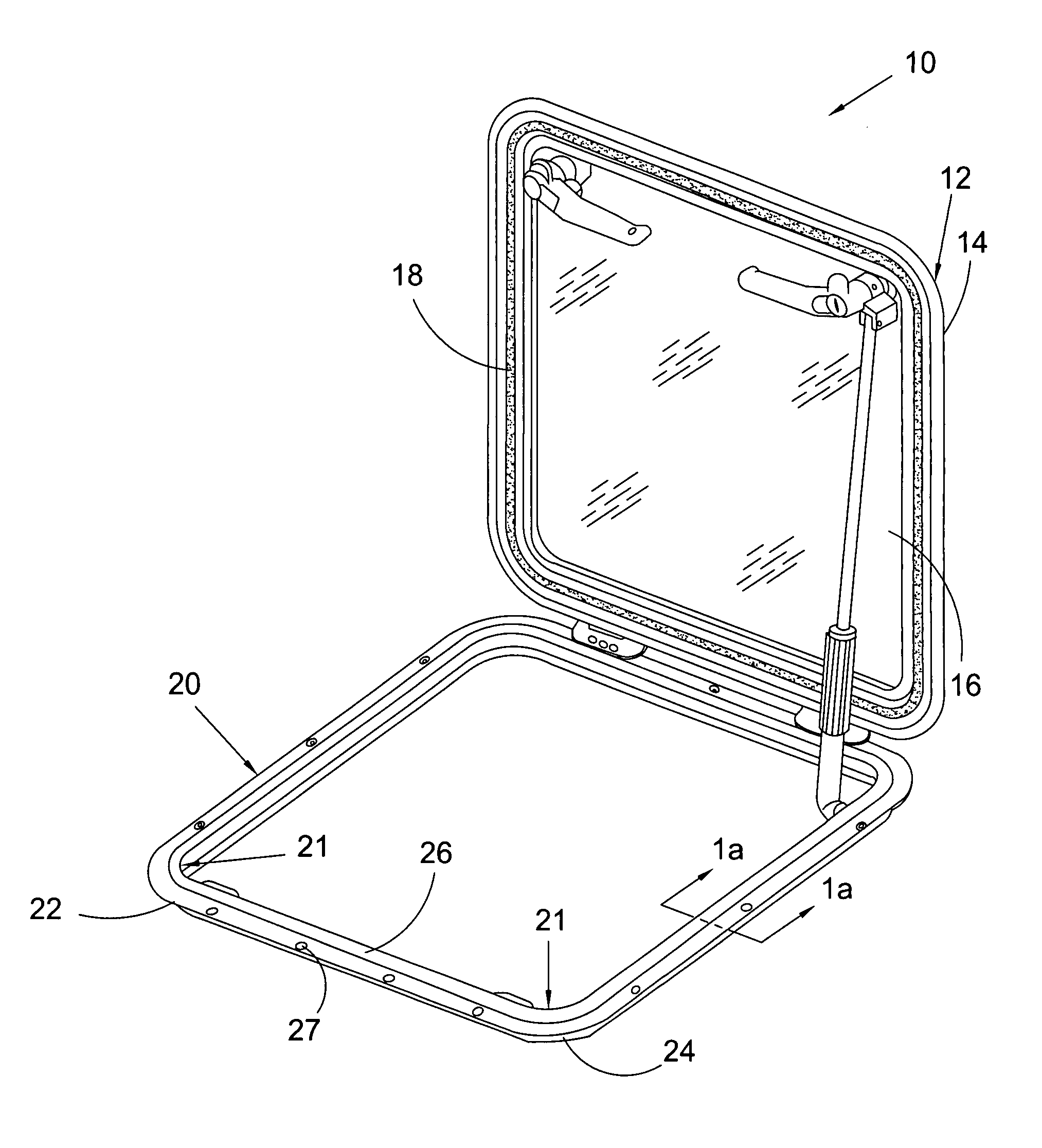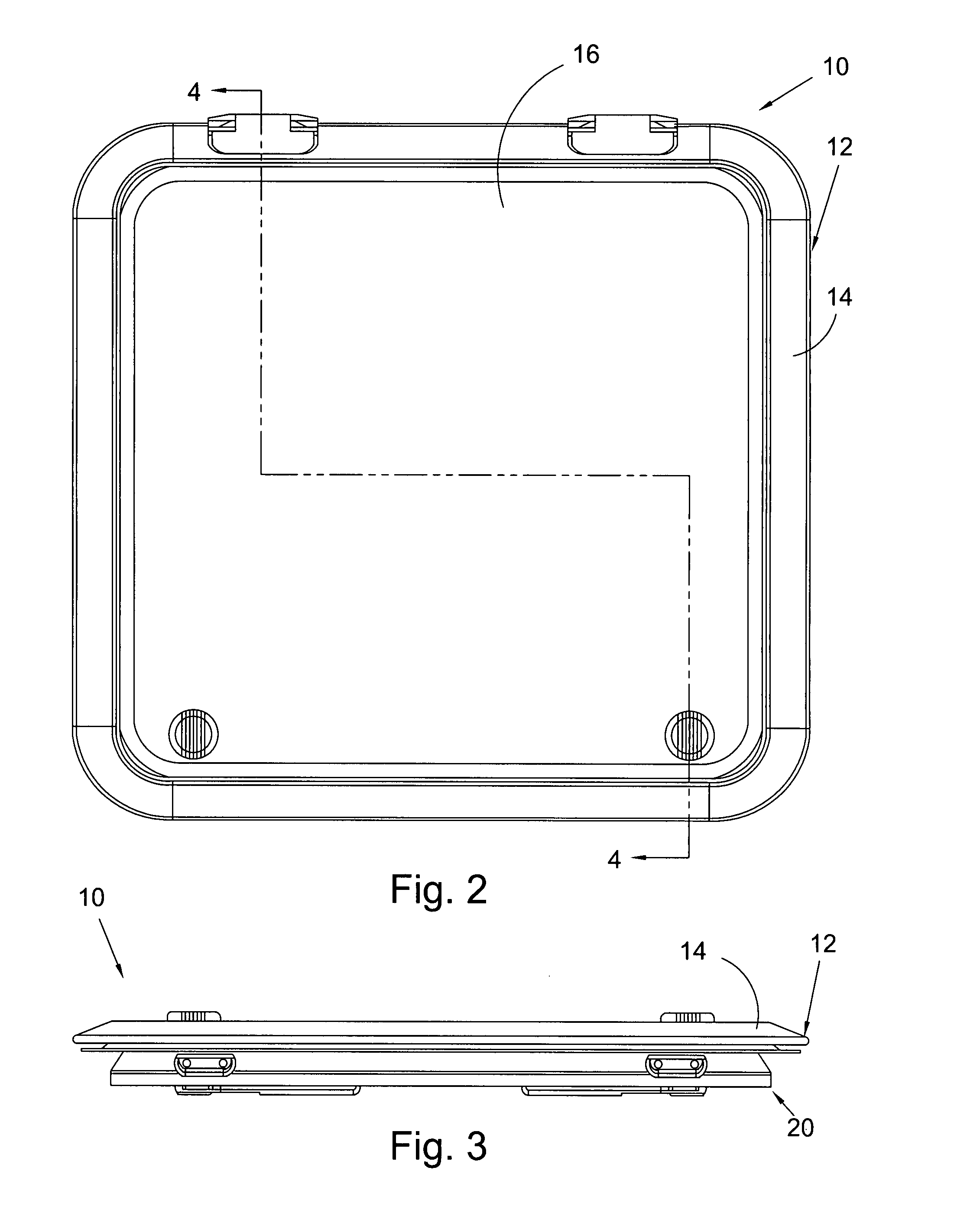Stainless steel hatch and method of manufacture
- Summary
- Abstract
- Description
- Claims
- Application Information
AI Technical Summary
Benefits of technology
Problems solved by technology
Method used
Image
Examples
Embodiment Construction
[0024]At the outset, it should be appreciated that while the present invention is described with respect to what is presently considered to be the preferred embodiments, the invention is not limited to the embodiments specifically recited herein. In the detailed description that follows like drawing numbers on different drawing views are intended to identify identical structural elements of the invention. Also, the adjectives, “front,”“back,”“left,”“right,”“top,” and “bottom” and their derivatives, in the description herebelow, refer to the perspective of one facing the invention as it is shown in the Figure under discussion.
[0025]Furthermore, it should be understood that this invention is not limited to the particular methodology, materials and modifications described and as such may, of course, vary. It should also be understood that the terminology used herein is for the purpose of describing particular aspects only, and is not intended to limit the scope of the present invention...
PUM
| Property | Measurement | Unit |
|---|---|---|
| Length | aaaaa | aaaaa |
| Length | aaaaa | aaaaa |
| Radius | aaaaa | aaaaa |
Abstract
Description
Claims
Application Information
 Login to view more
Login to view more - R&D Engineer
- R&D Manager
- IP Professional
- Industry Leading Data Capabilities
- Powerful AI technology
- Patent DNA Extraction
Browse by: Latest US Patents, China's latest patents, Technical Efficacy Thesaurus, Application Domain, Technology Topic.
© 2024 PatSnap. All rights reserved.Legal|Privacy policy|Modern Slavery Act Transparency Statement|Sitemap



